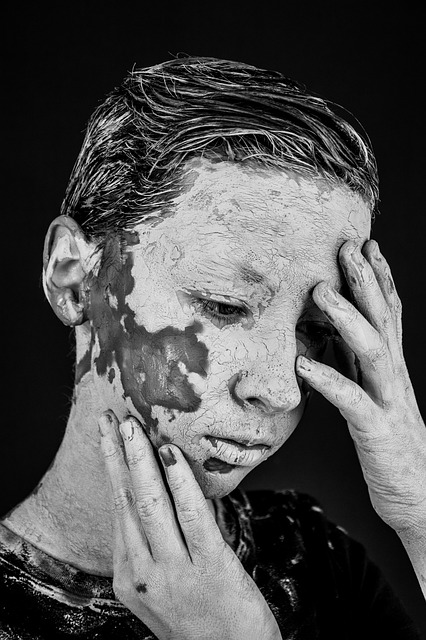Vitiligo is a skin condition that affects millions of people worldwide. It is characterized by the loss of skin color, resulting in white patches on the skin. Vitiligo can occur at any age, but it usually develops between the ages of 20 and 40. The condition is not contagious, and it does not cause any physical harm, but it can have a significant impact on a person’s self-esteem and quality of life.
Vitiligo affects approximately 1% of the world’s population, with no significant difference in prevalence between genders or ethnicities. The condition is more common in people with darker skin tones, and it tends to run in families.
There are two main types of vitiligo: non-segmental and segmental. Non-segmental vitiligo is the most common type and occurs when white patches appear symmetrically on both sides of the body. Segmental vitiligo, on the other hand, affects only one side of the body and is less common.
Causes of Vitiligo
 The exact cause of vitiligo is unknown, but researchers believe that it may be due to a combination of genetic, autoimmune, and environmental factors.
The exact cause of vitiligo is unknown, but researchers believe that it may be due to a combination of genetic, autoimmune, and environmental factors.
Autoimmune disorders
Some researchers believe that vitiligo may be an autoimmune disorder in which the body’s immune system attacks and destroys melanocytes, the cells that produce pigment in the skin.
Genetics
Vitiligo tends to run in families, suggesting that genetics may play a role in its development. However, not all people with a family history of vitiligo will develop the condition.
Environmental factors
Environmental factors such as sunburns, exposure to chemicals or toxins, and emotional stress may trigger or worsen vitiligo symptoms.
Other medical conditions
Vitiligo has been associated with other medical conditions such as thyroid disorders, diabetes, and pernicious anemia.
Symptoms of Vitiligo
The primary symptom of vitiligo is the loss of skin color, resulting in white patches on the skin. These patches can appear anywhere on the body, but they are most commonly found on the face, hands, feet, and joints. Other symptoms may include premature graying of hair and sensitivity to sunlight.
Coping Strategies for Living with Vitiligo
Living with vitiligo can be challenging, but there are several coping strategies that can help individuals manage the condition and maintain their mental and emotional well-being.
Positive self-talk
Positive self-talk involves replacing negative thoughts with positive ones. This can help individuals with vitiligo feel more confident and comfortable in their own skin.
Building a support system
Having a support system of family, friends, or a support group can provide emotional support and help individuals with vitiligo feel less isolated.
Embracing individuality
Embracing individuality involves accepting oneself for who they are and celebrating their unique qualities. This can help individuals with vitiligo feel more confident and comfortable in their own skin.
Avoiding triggers
Avoiding triggers such as sunburns or exposure to chemicals or toxins can help prevent or reduce vitiligo symptoms.
Practicing self-care
Practicing self-care involves taking care of oneself physically, mentally, and emotionally. This can include getting enough sleep, eating a healthy diet, exercising regularly, and engaging in activities that bring joy and relaxation.
Treatment Options for Vitiligo
There is no cure for vitiligo, but there are several treatment options that can help reduce symptoms and improve the appearance of the skin.
Topical corticosteroids
Topical corticosteroids are creams or ointments that contain steroids. They work by reducing inflammation in the skin and can help reduce vitiligo symptoms.
Topical calcineurin inhibitors
Topical calcineurin inhibitors are creams or ointments that work by suppressing the immune system. They can help reduce vitiligo symptoms and are often used in combination with other treatments.
Phototherapy
Phototherapy involves exposing the skin to ultraviolet light. This can help stimulate melanocytes and improve the appearance of the skin.
Excimer laser
The excimer laser is a type of phototherapy that uses a focused beam of light to target specific areas of the skin. It can be an effective treatment for small patches of vitiligo.
Skin grafting
Skin grafting involves taking healthy skin from one part of the body and transplanting it to an area affected by vitiligo. This can be an effective treatment for larger patches of vitiligo.
Managing Stress and Anxiety with Vitiligo
Living with vitiligo can be stressful and anxiety-provoking, but there are several strategies that can help individuals manage these emotions.
Mindfulness meditation
Mindfulness meditation involves focusing on the present moment and accepting one’s thoughts and feelings without judgment. This can help individuals with vitiligo feel more calm and centered.
Yoga
Yoga involves physical postures, breathing exercises, and meditation. It can help reduce stress and anxiety and improve overall well-being.
Exercise
Regular exercise can help reduce stress and anxiety and improve overall well-being.
Therapy
Therapy can provide individuals with vitiligo with a safe space to discuss their emotions and develop coping strategies for managing stress and anxiety.
Seeking Support for Living with Vitiligo
There are several resources available for individuals with vitiligo who are seeking support.
Support groups
Support groups provide individuals with vitiligo with a safe space to connect with others who are going through similar experiences.
Online communities
Online communities such as forums and social media groups can provide individuals with vitiligo with a sense of community and support.
Counseling services
Counseling services can provide individuals with vitiligo with a safe space to discuss their emotions and develop coping strategies for managing stress and anxiety.
Advocacy organizations
Advocacy organizations such as the Vitiligo Research Foundation and the American Vitiligo Research Foundation can provide individuals with vitiligo with information about the condition, treatment options, and support resources.
Living with vitiligo can be challenging, but with the right coping strategies and treatment options, it is possible to manage the condition and live a fulfilling life. Seeking support and practicing self-care are essential for maintaining mental and emotional well-being. Individuals with vitiligo should work closely with their healthcare providers to develop a treatment plan that works best for them.









